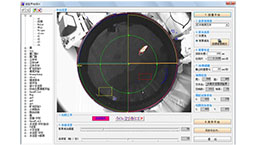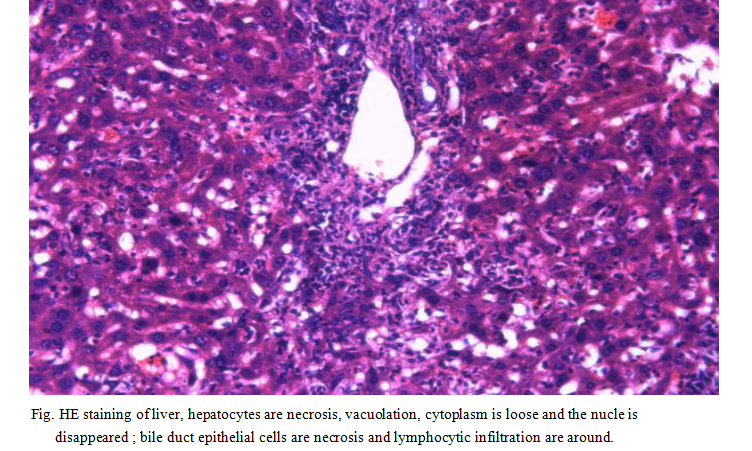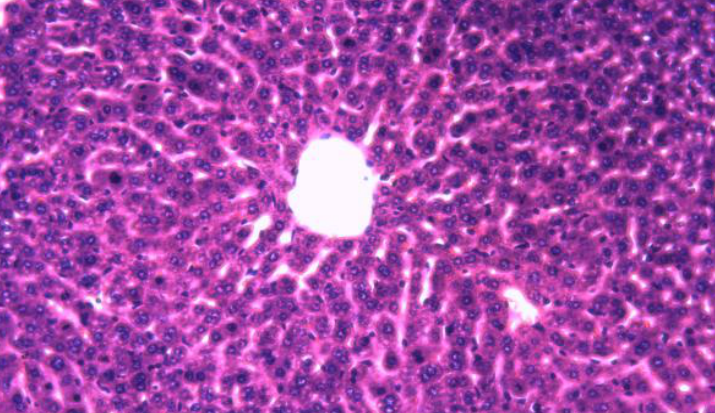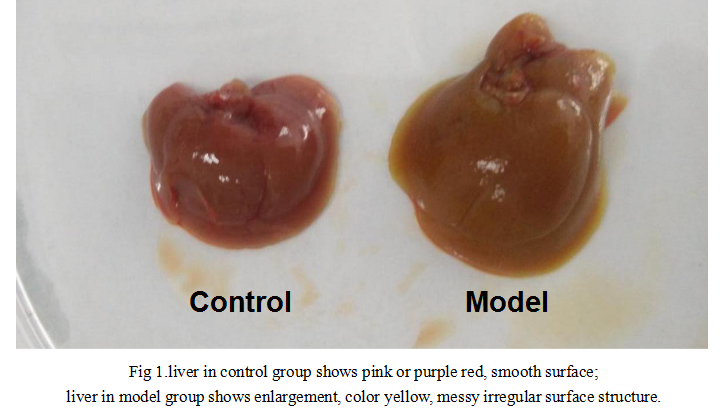Mouse Model for Intrahepatic Cholestasis (IC)
- Product No.DSI544Mu01
- Organism SpeciesMus musculus (Mouse) Same name, Different species.
- Prototype SpeciesHuman
- SourceBile duct ligation induced cholestasis
- Model Animal StrainsBalb/c Mice (SPF class), healthy, male, body weight 18g~20g.
- Modeling GroupingRandomly divided into six group: Control group, Model group, Positive drug group and Test drug group (three doses)
- Modeling Period14d
- Modeling Method1. Fasting for one night before the operation, free drinking water.
2. Weighing and then intraperitoneal injection of sodium (3%) 40mg/kg anesthesia, supine position fixed on the operating table, shaving and disinfection on the surgical field.
3. Open abdominal cavity layer by layer along the ventral midline, find the common bile duct at the beginning of the duodenum and separate the common bile duct. Put two 7-0 silk under the common bile duct and make a ligation respectively, to cut the line in the middle of bile duct, and then use the 7-0 silk to suture the inner layer, 5-0 silk to suture the outer layer.The mice are placed on the heating pad to maintain body temperature at 37±0.5℃.
4. After the mice were awake, put it back clean cage , observe the state and make records.
5. The mice on control group did not do ligation, the other operations are the same.
6. 14d after operation. Anesthesia mice, pick the eye to take blood, 3000r/min, 4℃,10min, separate the upper serum, stored at -80℃. Take a 0.2cm * 1cm * 1.5cm of the left lobe of liver as pathological or divided sample. - ApplicationsDisease Model
- Downloadn/a
- UOM Each case
- FOB
US$ 150
For more details, please contact local distributors!
Model Evaluation
1. Gross observation
Mice in model group reduced food intake after bile duct ligation, hair scattered without luster, less activity and response to sound and light stimulation is decreased gradually, and the urine is gradually like tea.
Sham group had no abnormal changes.
Liver in BDL group, the liver is enlarged obviously, the liver capsule becomes tense, the edge is blunt, show brown yellow and slightly hard. In the control group, the liver volume is normal, the capsule has no tension,soft, and the plane is rosy and delicate.
2. Serum total bile acid is a specific index for the reaction of cholestasis. To detect the level of total bile acid in the serum of mice.
3.Get 15cm×1.0cm×02cm in the left lobe of the liver and fixed the 24h in 4% poly formaldehyde solution. After HE staining and TUNEL staining are performed in paraffin sections. The staining results show that the structure of hepatic lobule is severely damaged, the reticular framework is collapsed and necrosis of liver cells, vacuolar changes, liver cell cord, liver sinus congestion and swelling, the boundary is not clear, peripheral inflammatory cell infiltration.
Liver ischemic injury score:
0 points: no liver cell damage
1 points: mild damage, characterized as cytoplasmic vacuoles, focal nuclear condensation
2 points: moderate damage, the expansion of the blood sinus, the vacuole of the cell, the cell boundary is fuzzy
3 points: moderate to severe damage, coagulation necrosis, a large number of blood sinus expansion, red blood cells to the liver lock, the red blood cells increased, neutral white blood cell edge (attached to the blood vessel wall)
4 points: severe necrosis, loss of liver structure, liver collapse, bleeding, neutrophil infiltration
Pathological Results
Cytokines Level
After liver injury, the expression of TNFα、IFNγ、IL-2、IL-6、IL-12、ICAM1 and other cytokines in serum is significantly increased, which could be detected by ELISA method.
Statistical Analysis
SPSS software is used for statistical analysis, measurement data to mean ± standard deviation (x ±s), using t test and single factor analysis of variance for group comparison, P<0.05 indicates there was a significant difference, P<0.01 indicates there are very significant differences.
GIVEAWAYS
INCREMENT SERVICES
-
 Tissue/Sections Customized Service
Tissue/Sections Customized Service
-
 Serums Customized Service
Serums Customized Service
-
 Immunohistochemistry (IHC) Experiment Service
Immunohistochemistry (IHC) Experiment Service
-
 Small Animal In Vivo Imaging Experiment Service
Small Animal In Vivo Imaging Experiment Service
-
 Small Animal Micro CT Imaging Experiment Service
Small Animal Micro CT Imaging Experiment Service
-
 Small Animal MRI Imaging Experiment Service
Small Animal MRI Imaging Experiment Service
-
 Small Animal Ultrasound Imaging Experiment Service
Small Animal Ultrasound Imaging Experiment Service
-
 Transmission Electron Microscopy (TEM) Experiment Service
Transmission Electron Microscopy (TEM) Experiment Service
-
 Scanning Electron Microscope (SEM) Experiment Service
Scanning Electron Microscope (SEM) Experiment Service
-
 Learning and Memory Behavioral Experiment Service
Learning and Memory Behavioral Experiment Service
-
 Anxiety and Depression Behavioral Experiment Service
Anxiety and Depression Behavioral Experiment Service
-
 Drug Addiction Behavioral Experiment Service
Drug Addiction Behavioral Experiment Service
-
 Pain Behavioral Experiment Service
Pain Behavioral Experiment Service
-
 Neuropsychiatric Disorder Behavioral Experiment Service
Neuropsychiatric Disorder Behavioral Experiment Service
-
 Fatigue Behavioral Experiment Service
Fatigue Behavioral Experiment Service
-
 Nitric Oxide Assay Kit (A012)
Nitric Oxide Assay Kit (A012)
-
 Nitric Oxide Assay Kit (A013-2)
Nitric Oxide Assay Kit (A013-2)
-
 Total Anti-Oxidative Capability Assay Kit(A015-2)
Total Anti-Oxidative Capability Assay Kit(A015-2)
-
 Total Anti-Oxidative Capability Assay Kit (A015-1)
Total Anti-Oxidative Capability Assay Kit (A015-1)
-
 Superoxide Dismutase Assay Kit
Superoxide Dismutase Assay Kit
-
 Fructose Assay Kit (A085)
Fructose Assay Kit (A085)
-
 Citric Acid Assay Kit (A128 )
Citric Acid Assay Kit (A128 )
-
 Catalase Assay Kit
Catalase Assay Kit
-
 Malondialdehyde Assay Kit
Malondialdehyde Assay Kit
-
 Glutathione S-Transferase Assay Kit
Glutathione S-Transferase Assay Kit
-
 Microscale Reduced Glutathione assay kit
Microscale Reduced Glutathione assay kit
-
 Glutathione Reductase Activity Coefficient Assay Kit
Glutathione Reductase Activity Coefficient Assay Kit
-
 Angiotensin Converting Enzyme Kit
Angiotensin Converting Enzyme Kit
-
 Glutathione Peroxidase (GSH-PX) Assay Kit
Glutathione Peroxidase (GSH-PX) Assay Kit
-
 Cloud-Clone Multiplex assay kits
Cloud-Clone Multiplex assay kits
| Catalog No. | Related products for research use of Mus musculus (Mouse) Organism species | Applications (RESEARCH USE ONLY!) |
| DSI544Mu01 | Mouse Model for Intrahepatic Cholestasis (IC) | Disease Model |
| DSI544Mu02 | Mouse Model for Intrahepatic Cholestasis (IC) | n/a |
| DSI544Mu03 | Mouse Model for Intrahepatic Cholestasis (IC) | n/a |








